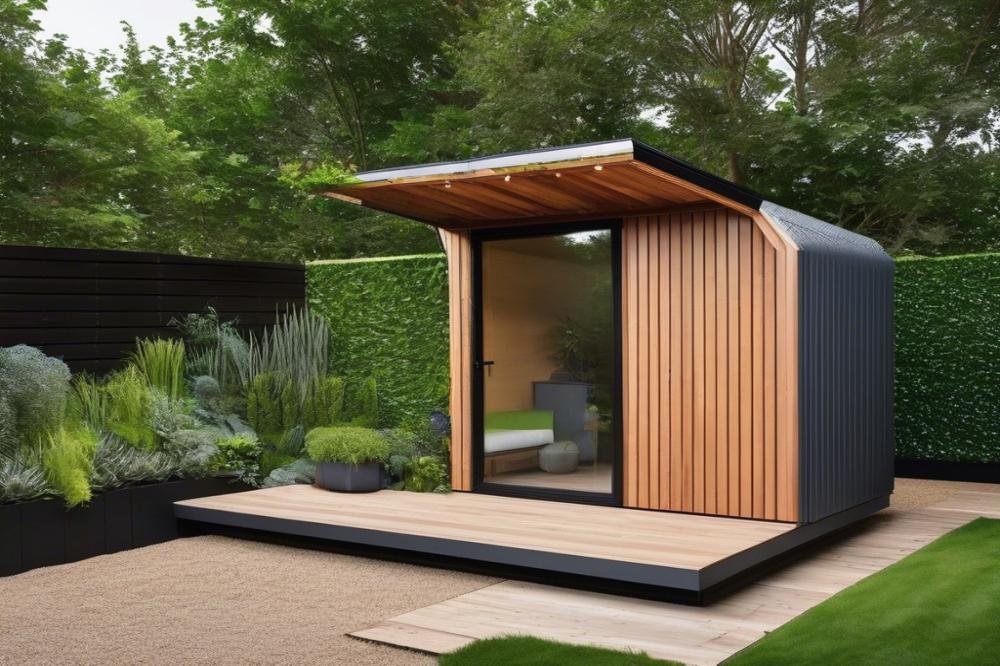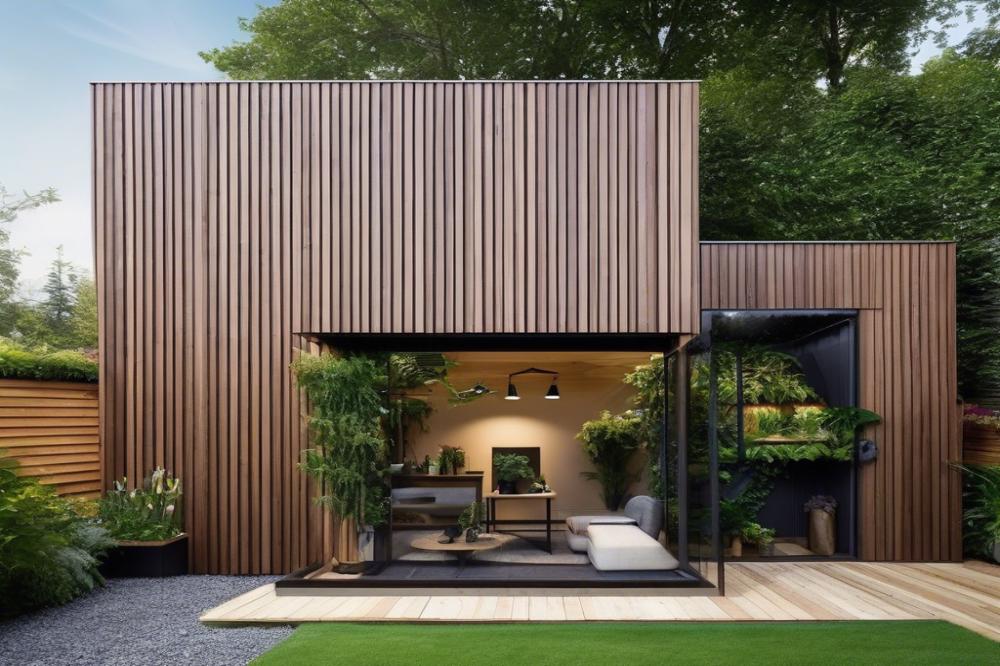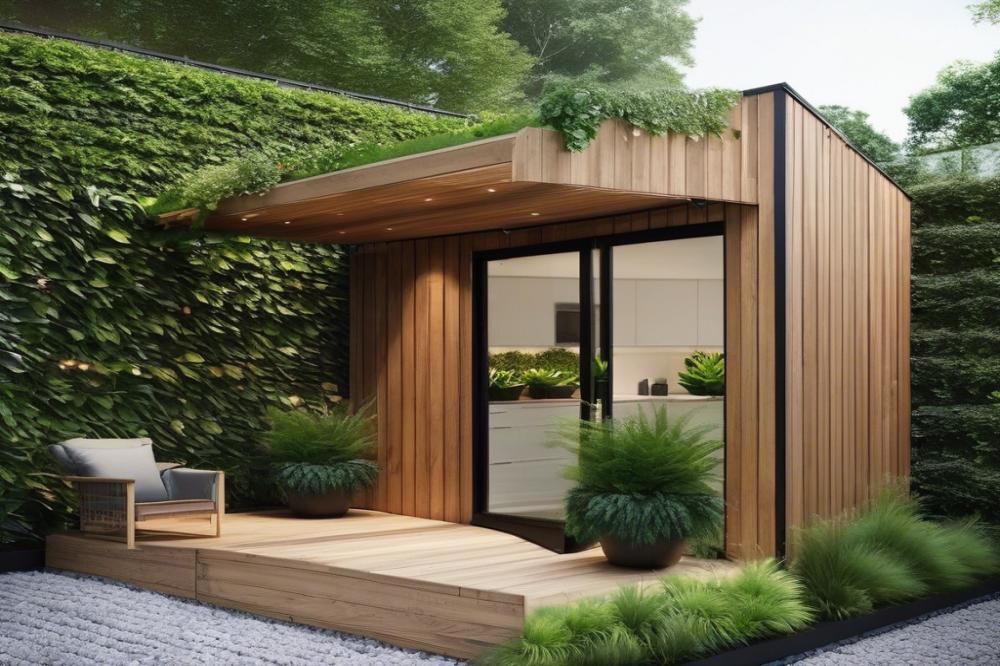The Advantages of living walls in shed sustainability
In recent years, the concept of creating vertical gardens has gained notable traction, especially in the realm of eco-friendly design. Homeowners and gardeners alike are increasingly drawn to the idea of integrating greenery into their spaces. This trend not only enhances aesthetics but also contributes to improving urban environments. living walls offer a unique blend of garden and architecture that can transform ordinary structures, such as sheds, into vibrant ecosystems.
The importance of sustainable materials cannot be overstated. Gardens in urban settings often face challenges, including limited space and declining biodiversity. vertical gardens creatively address these issues by utilizing upward growth to optimize available space. Incorporating such innovations into shed sustainability practices can lead to improved air quality and increased energy efficiency.
Additionally, these green walls play a significant role in insulation. Plants naturally regulate temperature, helping to keep shed interiors cool in the summer and warm in the winter. Beyond mere functionality, they introduce elements of nature into design, providing a calming presence that enhances well-being.
Moreover, fostering biodiversity is crucial in an era where many species are disappearing. Living walls encourage beneficial insects and pollinators to thrive within urban environments. Engaging in urban gardening in this way not only beautifies the space but also supports the broader ecosystem.
Implementing living walls extends beyond environmental concerns. Homeowners frequently seek to create inviting outdoor areas that reflect personal style. Therefore, choosing to install a green wall can dramatically elevate the look of a shed, making it a focal point rather than just a storage space. This combination of utility and charm is what draws individuals to innovative solutions for shed sustainability.
Living Walls: An Overview

Living walls encompass a range of vertical gardens and green walls that add life to surfaces often left bare. These installations can transform any structure by creating a lush, green façade. Construction varies, but they are generally built using a modular system that supports plants without traditional soil. Instead of dirt, they typically rely on a lightweight growing medium, allowing diverse plant species to thrive.
Common plants for vertical gardens include ferns, succulents, and flowering species. These selections usually cater to a variety of climates and light conditions. Some systems incorporate irrigation methods, ensuring plants receive adequate water while minimizing waste. Urban gardening has gained popularity, making living walls an attractive choice for those with limited horizontal space.
The application of green walls in sheds is particularly noteworthy. They serve multiple functions, such as improving insulation and enhancing air quality. Moreover, these installations can contribute to energy efficiency by regulating temperature. This means that during hot summers, green walls can keep interiors cooler. Conversely, they may aid in retaining warmth during colder months.
In addition to practical benefits, living walls also add remarkable aesthetics to any structure. Their vibrant foliage creates a soothing atmosphere. This visual appeal can transform a simple shed into an inviting space. Biodiversity is another advantage, as these setups provide habitats for insects and birds. Incorporating a variety of plants promotes a balanced ecosystem, which can help native species thrive.
Ultimately, living walls represent an eco-friendly design solution that optimizes space while improving the environment. As we explore sustainable practices, their role in modern architecture continues to expand. With countless benefits, they promote both beauty and functionality in our everyday lives.
Insulation and Energy Efficiency

Living walls can significantly improve the insulation of sheds. These vertical gardens not only add beauty but also provide a layer of thermal protection. By incorporating vegetation, the walls help regulate temperature throughout the year. This means that during the hot summer months, they keep the inside cooler. In winter, they act as a barrier against cold winds, reducing heat loss.
Energy efficiency is another crucial benefit. When sheds are better insulated, heating and cooling costs drop. Homeowners can save money by spending less on energy bills. Many people often overlook the role of plants in this process. Not only do they look great, but they also enhance air quality. Healthier air within the shed can make a significant difference for those working or spending time inside.
Combining various materials with living walls improves insulation further. For instance, using recycled or eco-friendly design materials can complement the greenery. Insulating materials like straw bales or cellulose can be added behind the plants. Together, they create a solid barrier that excels in energy conservation.
Biodiversity is also worth mentioning. A wide variety of plants in green walls can contribute to a vibrant ecosystem. This helps attract pollinators, which are crucial for urban gardening. Additionally, the aesthetics of living walls enhances the overall appearance of a shed. They transform a simple structure into a statement piece.
Space optimization comes into play as well. Sheds are often limited in area, especially in urban settings. A well-designed living wall utilizes vertical space efficiently. It allows for more room for storage or other functions inside the shed. With all these advantages, it’s clear that investing in living walls offers multiple benefits for sustainability.
Improving Air Quality

Living walls provide a remarkable solution for enhancing air quality in both indoor and outdoor spaces. They filter pollutants and increase oxygen levels, making the environment healthier. Plants are natural air purifiers, and many species thrive in vertical gardens. These green walls can significantly reduce harmful substances like carbon dioxide and volatile organic compounds (VOCs).
Certain plants, such as bamboo palm and spider plants, are particularly effective for indoor air quality enhancement. Research from NASA highlights their ability to absorb toxins. Additionally, living walls contribute to biodiversity, as various plant types can coexist in a single structure. This diversity can attract beneficial insects, further supporting a balanced ecosystem.
Beyond cleaning the air, these installations also provide aesthetic benefits. They can transform a dull space into a vibrant environment. Homeowners and businesses alike appreciate the visual appeal. Urban gardening often incorporates these green walls, allowing city dwellers to bring nature into densely populated areas.
Moreover, living walls offer insulation benefits. They help regulate indoor temperatures, which contributes to energy efficiency. This eco-friendly design enables buildings to require less heating and cooling. Consequently, energy consumption declines, which is advantageous for both the planet and utility bills.
The space optimization that vertical gardens provide is also valuable. In urban areas, where square footage is limited, they utilize vertical space effectively. This not only maximizes the footprint but also cultivates a green atmosphere in smaller environments. More plants mean improved air quality, leading to healthier living conditions for everyone.
Recent studies support these claims, highlighting the positive impact of greenery on well-being. A connection exists between nature and improved mental health too. Therefore, incorporating living walls into sustainable sheds stands to benefit both environmental and personal health.
Biodiversity and Urban Gardening

Living walls offer more than just aesthetics. They create vital habitats for local wildlife. Birds, insects, and other small creatures find shelter in these vertical gardens. This promotes a richer biodiversity in urban areas. Enhanced habitats support various species, enriching local ecosystems.
Urban gardening practices are boosted by green walls. These structures allow city dwellers to grow plants in limited spaces. With vertical gardening, anyone can cultivate flowers, herbs, or vegetables without needing a large yard. Residents can contribute positively to their community through these eco-friendly designs.
Pollinators, like bees and butterflies, are essential to our food supply. Installing features that attract these helpful species makes living walls even more beneficial. Native plants can be incorporated into the design, further encouraging biodiversity. Local flora not only supports wildlife but also enhances the overall health of urban landscapes.
Energy efficiency is another advantage of vertical greenery. Walls covered in plants can provide insulation. This helps regulate indoor temperatures, reducing the need for heating and cooling. As a result, energy costs can decrease, making homes more sustainable.
Moreover, green walls improve air quality. Plants naturally filter toxins and pollutants from the air. In cities, where pollution is often a concern, this benefit is particularly valuable. Healthier air leads to better quality of life for residents.
Vertical gardens can transform blank city spaces into green havens. These living installations bring a patch of nature to concrete jungles. They create a sense of community and connection to the environment. Everyone can enjoy the benefits of living walls, whether through gardening or simply appreciating the beauty they add to urban settings.
Aesthetic Benefits and Space Optimization
The visual appeal of a shed can transform with the addition of a vertical garden. These green walls serve as a striking focal point, drawing attention and admiration. Homeowners often find that incorporating plants brings life to otherwise dull exteriors. With a combination of colors and textures, gardeners can create stunning displays that change with the seasons.
Beyond aesthetics, these installations offer significant space optimization. In urban settings, where space can be a luxury, vertical gardens allow people to maximize their outdoor areas. Imagine a tiny backyard blooming with climbing vines or colorful flowers layered on a wall. This creates a mini oasis without taking up valuable ground space. Outdoor living areas can then foster relaxation or social interaction.
Green walls can also enhance the overall ecosystem of your backyard. They attract pollinators like bees and butterflies, boosting local biodiversity. This can have a positive impact on plants and flowers in the surrounding area. With strategic selections of flora, gardeners can improve air quality as well. Certain types of plants actively filter pollutants, creating a healthier environment.
Design options vary widely. Succulents and trailing plants can create soothing landscapes, while edibles like herbs and vegetables can combine beauty with functionality. This eco-friendly design approach not only pleases the eye but also contributes to energy efficiency. Well-planned green walls can provide insulation, reducing heating and cooling costs for sheds during extreme weather.
Whether you choose elegant ivy or vibrant geraniums, the layout options can be exciting. Consider incorporating shelves, pots, or even a trellis for climbing plants. Each design can cater to specific needs, ensuring both visual interest and utility. As a result, living walls stand as a testament to the harmony between beauty and practicality in contemporary gardening.
Embracing Sustainable Architecture
Living walls offer numerous benefits for shed sustainability. They contribute to better air quality by filtering pollutants. Plants absorb carbon dioxide while releasing oxygen, creating a healthier environment. Insulation is another key advantage; vegetation helps regulate temperature, keeping spaces cooler in summer and warmer in winter.
Integrating green walls not only improves aesthetics but also promotes biodiversity. A well-designed vertical garden can attract various pollinators like bees and butterflies. These natural connections enrich the ecosystem and make outdoor spaces more vibrant.
Incorporating eco-friendly design into outdoor structures is crucial in our fight against climate change. Sustainable practices lead to reduced energy consumption and lower environmental footprints. When making choices for shed projects, consider materials and systems that work in harmony with nature.
The beauty of this approach is that it doesn’t sacrifice style for functionality. Rather, it seamlessly combines both aspects, making sheds visually appealing while being kind to the planet.
Reflect on these ideas as you plan your own projects. Living walls are a straightforward way to enhance sustainability and aesthetics, creating inviting spaces that benefit everyone.



